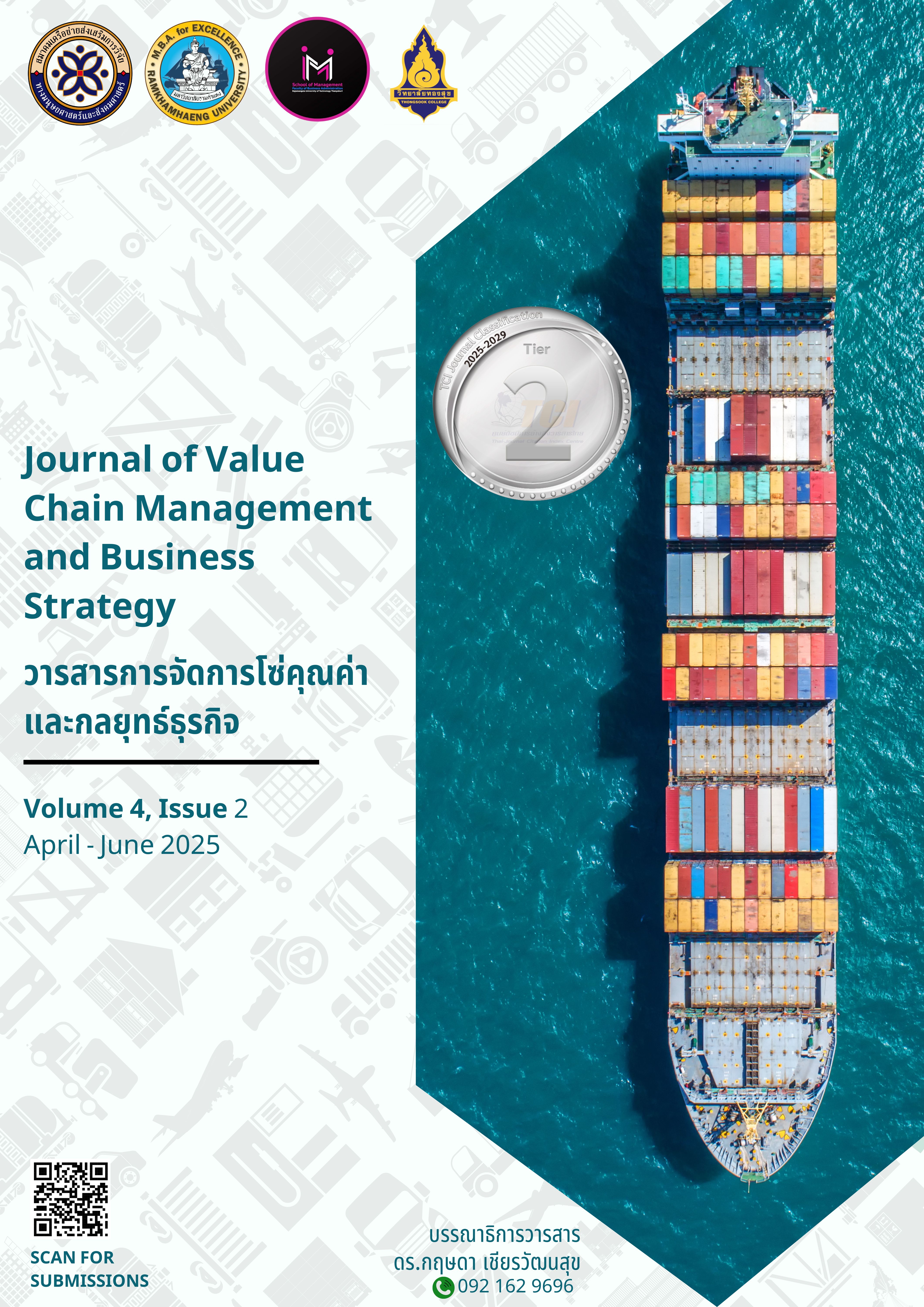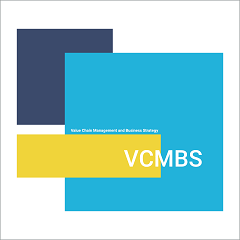แรงจูงใจในการทำงานและสภาพแวดล้อมในการทำงานที่ส่งผลต่อความผูกพันต่อองค์กรของพนักงานสายสนับสนุนมหาวิทยาลัยเกษตรศาสตร์
คำสำคัญ:
แรงจูงใจในการทำงาน, สภาพแวดล้อมในการทำงาน, ความผูกพันต่อองค์กร, พนักงานสายสนับสนุนบทคัดย่อ
การวิจัยครั้งนี้มุ่งศึกษาปัจจัยที่ส่งผลต่อความผูกพันต่อองค์กรของพนักงานสายสนับสนุนมหาวิทยาลัยเกษตรศาสตร์ ใน 3 ด้านหลัก คือ ลักษณะส่วนบุคคล แรงจูงใจในการทำงาน และสภาพแวดล้อมในการทำงาน โดยใช้ระเบียบวิธีวิจัยเชิงปริมาณ เก็บข้อมูลจากกลุ่มตัวอย่างพนักงานสายสนับสนุนจำนวน 249 คน ด้วยวิธีการสุ่มตัวอย่างแบบเจาะจง ใช้แบบสอบถามเป็นเครื่องมือในการเก็บรวบรวมข้อมูล และวิเคราะห์ข้อมูลด้วยค่าเฉลี่ย ค่าส่วนเบี่ยงเบนมาตรฐาน การทดสอบความแปรปรวนทางเดียว (One-Way ANOVA) และทดสอบความแตกต่างรายคู่ด้วยวิธี LSD
ผลการวิจัยพบว่า ระดับการศึกษาที่แตกต่างกันส่งผลต่อความผูกพันต่อองค์กรของพนักงานสายสนับสนุนกลุ่ม Gen Y อย่างมีนัยสำคัญทางสถิติที่ระดับ .05 โดยเฉพาะในมิติด้านความต่อเนื่องและบรรทัดฐาน ในด้านแรงจูงใจ พบว่าพนักงานกลุ่ม Gen Y ให้ความสำคัญกับความสำเร็จในหน้าที่การงาน (ค่าเฉลี่ย 4.58) และความภาคภูมิใจในการปฏิบัติงาน (ค่าเฉลี่ย 4.55) ขณะที่ปัจจัยค้ำจุนที่ได้รับคะแนนสูงสุดคือนโยบายที่ชัดเจนและเป็นธรรม (ค่าเฉลี่ย 4.63) และระบบการบริหารงานที่อำนวยความสะดวก (ค่าเฉลี่ย 4.54) สำหรับสภาพแวดล้อมทางกายภาพ กลุ่ม Gen Y ให้ความสำคัญกับแสงสว่างเพียงพอ (ค่าเฉลี่ย 4.74) และอากาศถ่ายเทไม่แออัด (ค่าเฉลี่ย 4.72) นอกจากนี้ ปัจจัยที่ส่งผลต่อความผูกพันต่อองค์กรอย่างมีนัยสำคัญทางสถิติ ได้แก่ ความรับผิดชอบ ความก้าวหน้าในอาชีพ ลักษณะงาน เงินเดือนและสวัสดิการ ความมั่นคงและปลอดภัยในการทำงาน รวมถึงสภาพแวดล้อมทางกายภาพและทางจิตใจ ซึ่งผลการวิจัยนี้สามารถนำไปใช้เป็นแนวทางในการพัฒนานโยบายและกลยุทธ์เพื่อเสริมสร้างความผูกพันต่อองค์กรของพนักงานสายสนับสนุนมหาวิทยาลัยเกษตรศาสตร์ได้อย่างมีประสิทธิภาพและตรงกับความต้องการของพนักงานในแต่ละกลุ่มช่วงอายุ
เอกสารอ้างอิง
กนก เพ่งจินดา, นิวรัตน์ วิจิตรกุลสวัสดิ์, และ อัจฉรา หล่อตระกูล. (2567). ปัจจัยแรงจูงใจที่ส่งผลต่อขวัญกำลังใจในการปฏิบัติงานของบุคลากรเขตบางกะปิ. วารสารนวัตกรรมการจัดการศึกษาและการวิจัย, 6(2), 378-386.
เกียรติศักดิ์ ศุภรัตน์, และ กล้าหาญ ณ น่าน. (2566). สภาพแวดล้อมในการทำงานที่ส่งผลต่อพฤติกรรมการสร้างนวัตกรรมในการทำงานของข้าราชการครูประถมศึกษา. วารสารวิชาการการตลาดและการจัดการ, 10(1), 20-35.
ณัฐวุฒิ จันทวงษ์, และ กฤษฎา มูฮัมหมัด. (2564). ปัจจัยที่ส่งผลต่อความผูกพันองค์กรของบุคลากรบริษัท ไทยฟู้ดส์ กรุ๊ป จำกัด (มหาชน). ใน การประชุมนำเสนอผลงานวิจัยบัณฑิตศึกษาระดับชาติ ครั้งที่ 16 ปีการศึกษา 2564 (น. 1352-1362). มหาวิทยาลัยรังสิต.
ธีทัต ตรีศิริโชติ, และ อุมาพร ฉ่ำช่วง. (2564). ปัจจัยแรงจูงใจที่มีผลต่อการปฏิบัติงานของข้าราชการสังกัดสำนักงานสรรพสามิตภาคที่ 2. วารสารวิชาการสังคมศาสตร์เครือข่ายวิจัยประชาชื่น, 3(1), 15-23.
นันธิตา แสนคาร, และ ภัทรฤทัย ลุนสำโรง. (2567). แรงจูงใจในการปฏิบัติงานของครูสังกัดสำนักงานเขตพื้นที่การศึกษาประถมศึกษาลพบุรี เขต 2. วารสารเสียงธรรมจากมหายาน, 10(2), 193-207.
ภัทรพงษ์ งามกิจปราโมทย์, กัลย์ ปิ่นเกษร, และ ณัฐปภัสร์ จุ้ยเจริญ. (2567). ปัจจัยด้านลักษณะของงานที่มีอิทธิพลต่อความผูกพันต่อองค์กรของพนักงานองค์กรขนส่งมวลชนกรุงเทพ สำนักงานใหญ่. วารสารการพัฒนางานประจำสู่งานวิจัย, 11(1), 59-67.
ภัทรวดี เข้มแข็ง, ระวิง เรืองสังข์ และ ลำพอง กลมกูล. (2567). การบริหารสถานศึกษาสมรรถนะสูงของผู้บริหารโรงเรียนสังกัดเมืองพัทยา จังหวัดชลบุรี. วารสารพุทธพัฒนศาสตร์ศึกษา (ออนไลน์), 2(1), 94-109.
ยงยุทธ รักษาพล, สุมาลี รามนัฏ, และ ธัญนันท์ บุญอยู่. (2565). ความผูกพันในองค์กรในฐานะตัวแปรคั่นกลางที่เชื่อมโยงวัฒนธรรมองค์กรและการบริการทรัพยากรมนุษย์สู่ประสิทธิภาพในการปฏิบัติงานของพนักงานในบริษัทอุตสาหกรรมการผลิตเหล็กแห่งหนึ่งในจังหวัดระยอง. วารสารวิจัยมหาวิทยาลัยเวสเทิร์น มนุษยศาสตร์และสังคมศาสตร์, 8(1), 1-46.
วราพงษ์ คล่องแคล่ว, โกลัญญา ตายะ, และ นครินทร์ ชัยแก้ว. (2566). ปัจจัยที่มีผลต่อความผูกพันต่อองค์กรของพนักงานสายบริการคณะเทคโนโลยีสารสนเทศและการสื่อสาร มหาวิทยาลัยพะเยา. วารสารวิชาการเพื่อการพัฒนานวัตกรรมเชิงพื้นที่, 4(3), 1-16.
วลี สงสุวงศ์, แววมยุรา ศิรินภาวรากรกุล, จิณณพัต ชื่นชมน้อย, และ ศุภมาส สหพรพิทักษ์กุล. (2564). ปัจจัยที่ส่งผลต่อความผูกพันต่อองค์กรของพนักงานบริษัทผลิตภัณฑ์อาหารแห่งหนึ่ง. วารสารศิลปศาสตร์และอุตสาหกรรมบริการ, 4(2), 95–108.
ศรัณย์ ประสาร. (2565). แรงจูงใจในการปฏิบัติงานในสถานศึกษา. วารสารบริหารการศึกษาบัวบัณฑิต, 22(2), 39-48.
ศิรินญภัทร สิทธิจักร์, ชาติชัย อุดมกิจมงคล, และ สามารถ อัยกร. (2567). แรงจูงใจในการปฏิบัติงานที่มีผลต่อประสิทธิภาพในการปฏิบัติงานของบุคลากรองค์กรปกครองส่วนท้องถิ่นในเขตอำเภอธาตุพนม จังหวัดนครพนม. วารสารวิทยาการจัดการ มหาวิทยาลัยราชภัฏสกลนคร, 4(2), 495-510.
ศิริวรรณ จันรจนา, และกฤษดา เชียรวัฒนสุข. (2563). คุณภาพชีวิตในการทำงานและสภาพแวดล้อมในการทำงานที่ส่งผลต่อความผูกพันต่อองค์กรของพนักงาน. วารสารสังคมศาสตร์และมานุษยวิทยาเชิงพุทธ, 5(4), 160-174.
สุนิสา ช่อแก้ว, และ ศรัญญา ปานเจริญ. (2565). โลกของการทำงานกับความสามารถในการมีงานทำของว่าที่บัณฑิตจบใหม่เจเนอเรชันแซด. วารสารวิจัย มหาวิทยาลัยขอนแก่น สาขามนุษยศาสตร์และสังคมศาสตร์ (ฉบับบัณฑิตศึกษา), 10(2), 172-181.
อนุสร ใจฉวะ, สุมาลี รามนัฏ, และ ธัญนันท์ บุญอยู่. (2564). การศึกษาเรื่องอิทธิพลของความผูกพันต่อองค์กรและความพึงพอใจในงานในฐานะตัวแปรคั่นกลางระหว่างสภาพแวดล้อมในการทำงานต่อการธำรงรักษาบุคลากรของบริษัทอุตสาหกรรมรถยนต์แห่งหนึ่งในจังหวัดระยอง. วารสารวิจัยมหาวิทยาลัยเวสเทิร์น มนุษยศาสตร์และสังคมศาสตร์, 7(3), 175-187.
อัญมณี ศรีปลาด, และ สุรวี ศุนาลัย. (2565). สภาพแวดล้อมในการทำงานและคุณลักษณะของงานที่ส่งผลต่อความสุขในการทำงานของพนักงานกลุ่มเจเนอเรชั่นวายในกรุงเทพมหานคร. วารสารสุทธิปริทัศน์, 36(2), 134-148.
เอกรินทร์ ศิโรรัตนชัย. (2566). การทำงานที่บ้านของพนักงานกลุ่ม Gen Y. วารสาร มจร อุบลปริทรรศน์, 8(3), 90-100.
Allen, N. J., & Meyer, J. P. (1990). The measurement and antecedents of affective, continuance and normative commitment to the organization. Journal of Occupational Psychology, 63(1), 1-18. https://doi.org/10.1111/j.2044-8325.1990.tb00506.x
Bangbon, P., Snongtaweeporn, T., Channuwong, S., Katangchol, S., Raktakanishtha, P., Pleansamai, K., & Klaysud, S. (2023). Strategic human resource management for organizational performance of Thai Higher Education Institutions. Journal of Positive Psychology and Wellbeing, 7(2), 897-911.
Bassett-Jones, N., & Lloyd, G. C. (2005). Does Herzberg's motivation theory have staying power? Journal of Management Development, 24(10), 929-943. https://doi.org/10.1108/02621710510627064
Belov, M.T., Vaskov, M.A., Vorobyev, G.A., Burmistrov, S.V., Samygin, S.I. (2020). Specifics of Managerial Competencies in the Context of Managing the Personnel of an Educational Organization. In: Popkova, E.G., Vodenko, K.V. (eds) Public Administration and Regional Management in Russia. Contributions to Economics. Springer, Cham. https://doi.org/10.1007/978-3-030-38497-5_33
Bundtzen, H. (2021). Adapting Herzberg's Motivation-Hygiene Theory to a VUCA world–a repertory grid study. European Journal of Economics and Business Studies, 7(1), 99-115. https://doi.org/10.26417/914kzv77e
Dartey-Baah, K., & Amoako, G. K. (2011). Application of Frederick Herzberg's Two-Factor theory in assessing and understanding employee motivation at work: A Ghanaian Perspective. European Journal of Business and Management, 3(9), 1-8.
Deloitte. (2018). 2018 Deloitte Millennial Survey: Millennials disappointed in business, unprepared for Industry 4.0. Deloitte Touche Tohmatsu Limited.
Dimock, M. (2019). Defining generations: Where Millennials end and Generation Z begins. Pew Research Center. https://www.pewresearch.org/short-reads/2019/01/17/where-millennials-end-and-generation-z-begins/
Elenov, R., Postolov, K., Nacka, M., & Kitanovikj, B. (2024). Motivating generation Y: What millennials need for enhancing workplace satisfaction and productivity. Agriculture and Forestry, 70(1), 77–89. https://doi.org/10.17707/AgricultForest.70.1.05
Francis, T., & Hoefel, F. (2018). 'True Gen': Generation Z and its implications for companies. McKinsey & Company. https://www.mckinsey.com/industries/consumer-packaged-goods/our-insights/true-gen-generation-z-and-its-implications-for-companies#/
Górny, A. (2017). The use of working environment factors as criteria in assessing the capacity to carry out processes. In MATEC Web of Conferences (Vol. 94, p. 06011). EDP Sciences. https://doi.org/10.1051/matecconf/20179406011
Górny, A. (2022). Work Environment as a Factor in the Conduct of Manufacturing Processes. In Innovations in Industrial Engineering (pp. 432-440). Springer International Publishing. https://doi.org/10.1007/978-3-030-78170-5_37
Hadi, N., & Tentama, F. (2020). Affective commitment, continuance commitment and normative commitment in reflecting organizational commitment. American International Journal of Business Management, 3(8), 148-156.
Herzberg, F., Mausner, B., & Snyderman, B. B. (1959). The motivation to work (2nd ed.). John Wiley & Sons.
Kowalski, T. H. P., Loretto, W., & Redman, T. (2021). Work environment factors and workplace deviance: The role of employee engagement. The International Journal of Human Resource Management, 32(6), 1305-1329. https://doi.org/10.1080/09585192.2012.744334
Krejcie, R. V., & Morgan, D. W. (1970). Determining sample size for research activities. Educational and Psychological Measurement, 30(3), 607–610. https://doi.org/10.1177/001316447003000308
Lambert, E. G., Minor, K. I., Wells, J. B., & Hogan, N. L. (2016). Social support's relationship to correctional staff job stress, job involvement, job satisfaction, and organizational commitment. The Social Science Journal, 53(1), 22-32. https://doi.org/10.1016/j.soscij.2015.10.001
LeBlanc, J. (2024). Bridging the Gap: Understanding the Workplace Environment and Leadership Preferences of Generation Z. Journal of Business and Management Studies, 6(4), 128-136. https://doi.org/10.32996/jbms.2024.6.4.12
Lissitsa, S., & Kol, O. (2016). Generation X vs. Generation Y–A decade of online shopping. Journal of Retailing and Consumer Services, 31, 304-312. https://doi.org/10.1016/j.jretconser.2016.04.015
Lyons, S., & Schweitzer, L. (2017). A qualitative exploration of generational identity: Making sense of young and old in the context of today's workplace. Work, Aging and Retirement, 3(2), 209-224. https://doi.org/10.1093/workar/waw024
Mahmoud, A. B., Fuxman, L., Mohr, I., Reisel, W. D., & Grigoriou, N. (2021). “We aren't your reincarnation!” Workplace motivation across X, Y and Z generations. International Journal of Manpower, 42(1), 193-209. https://doi.org/10.1108/IJM-09-2019-0448
Mannheim, K. (1952). Essays on the Sociology of Knowledge. Routledge & Kegan Paul.
Mathieu, J.E. and Zajac, D. (1990) A Review and Meta-Analysis of the Antecedents, Correlates, and Consequences of Organizational Commitment. Psychological Bulletin, 108, 171-194. https://doi.org/10.1037/0033-2909.108.2.171
Meyer, J. P., & Allen, N. J. (1991). A three-component conceptualization of organizational commitment. Human Resource Management Review, 1(1), 61-89. https://doi.org/10.1016/1053-4822(91)90011-Z
Pattanamas, Z., & Tresirichod, T. (2019). Factors effecting for Laos employee retention in multinational corporation (MNC) in Lao PDR. Journal of Graduate School of Commerce-Burapha Review, 14(1), 74-89.
Pilcher, J. (1994). Mannheim's sociology of generations: An undervalued legacy. The British Journal of Sociology, 45(3), 481-495. https://doi.org/10.2307/591659
Rasool, S. F., Wang, M., Tang, M., Saeed, A., & Iqbal, J. (2021). How toxic workplace environment effects the employee engagement: The mediating role of organizational support and employee wellbeing. International Journal of Environmental Research and Public Health, 18(5), 2294. https://doi.org/10.3390/ijerph18052294
Shakeel, N., & But, S. (2015). Factors influencing employee retention: An integrated perspective. Journal of Resources Development and Management, 6(1), 32-49.
Surugiu, C., Surugiu, M. R., Grădinaru, C., & Grigore, A. M. (2025). Factors Motivating Generation Z in the Workplace: Managerial Challenges and Insights. Administrative Sciences, 15(1), 29. https://doi.org/10.3390/admsci15010029
Thohiroh, A. A., Kristalindari, M., Nurilla, A. E., Mardhiah, L., Khaerunnisa, S., Maulina, D., & Arbiyah, N. (2018, July). The Development of Organizational Commitment Scale for Non-profit Organization. In Universitas Indonesia International Psychology Symposium for Undergraduate Research (UIPSUR 2017) (pp. 257-264). Atlantis Press. https://doi.org/10.2991/uipsur-17.2018.38
Tladinyane, R., & Van der Merwe, M. (2016). Career adaptability and employee engagement of adults employed in an insurance company: An exploratory study. South African Journal of Human Resource Management, 14(1), a752. https://doi.org/10.4102/sajhrm.v14i1.752
VanMeter, R. A., Grisaffe, D. B., Chonko, L. B., & Roberts, J. A. (2013). Generation Y's ethical ideology and its potential workplace implications. Journal of Business Ethics, 117(1), 93-109. https://doi.org/10.1007/s10551-012-1505-1
Weng, Q., & McElroy, J. C. (2012). Organizational career growth, affective occupational commitment and turnover intentions. Journal of Vocational Behavior, 80(2), 256-265. https://doi.org/10.1016/j.jvb.2012.01.014
Westerman, J. W., Bergman, J. Z., Bergman,S. M., & Daly, J. P. (2020). Are universities creating millennial narcissistic employees? An empirical examination of narcissism in business students and its implications. Journal of Management Education, 36(1), 5-32. https://doi.org/10.1177/1052562911408097
Williams, L. J., & Hazer, J. T. (1986). Antecedents and consequences of satisfaction and commitment in turnover models: A reanalysis using latent variable structural equation methods. Journal of Applied Psychology, 71(2), 219–231. https://doi.org/10.1037/0021-9010.71.2.219
Wowor, J. V., & Dewi, Y. E. P. (2022). The influence of psychological safety towards employee engagement using organizational support as intervening variable. Andalas Management Review, 6(2), 32-42. https://doi.org/10.25077/amar.6.2.48-58.2022
Yousaf, S. (2020). Dissection of Herzberg's two-factor theory to predict job satisfaction: Empirical evidence from the telecommunication industry of Pakistan. Pakistan Business Review, 8(2), 85-128. https://doi.org/10.35536/ljb.2019.v8.v2.a4
ดาวน์โหลด
เผยแพร่แล้ว
รูปแบบการอ้างอิง
ฉบับ
ประเภทบทความ
สัญญาอนุญาต
ลิขสิทธิ์ (c) 2025 วารสารการจัดการโซ่คุณค่าและกลยุทธ์ธุรกิจ

อนุญาตภายใต้เงื่อนไข Creative Commons Attribution-NonCommercial-NoDerivatives 4.0 International License.




